One of the first questions asked of me when I began studying for a Certificate in Tarot Therapy was: what is Tarot? A deceptively simple question because, the more I thought about it, the more elusive a satisfactory answer became. I mean, a Tarot deck is a set of cards – nothing more, nothing less. Arguably, as physical objects, the cards themselves are neither mysterious nor sacred. Yet Tarot as an entity, of course, is far greater than the sum of its parts, and the sacredness lies, for me, in what those seventy-eight pieces of card represent.
Today, well over a year after embarking on the certificate, an answer that feels true came to me: Tarot is a love song, whose lyrics are images. It is a love song to life, to you, to all of us, written through us by that cosmic force that defies naming, but which we nonetheless seek to define by many different names.
If I had to choose a single card that sings that song most enchantingly, it would be the Queen of Cups.
The therapeutic approach to Tarot, which I embrace, is an elemental, energetic one. Each of the four Tarot Queens, for instance, is associated with the element of water. This primary element then combines with the element of each suit: the Queen of Pentacles is Earth of Water, the Queen of Wands, Fire of Water, the Queen of Swords, Air of Water.
The Queen of Cups, then, is Water of Water: the mature essence, and fullest expression, of its power. Life experience has taught her how to make peace with the ebb and flow of the emotional realm. Like water in its most positive aspect, she is life-enhancing, gentle, kindly, persistent, supporting. She understands that emotions, creativity, and intuition must be expressed, and that to repress them leads to a stagnation that can, ultimately, become toxic.
This wisdom, she desires to share – for the Queens distil the meaning of their suit into intimate conversations, engaging in a very personal dialogue that is tailored to your particular needs.
Of the numerous decks I own, my best friend remains the classic Rider Waite Smith Tarot, and it is the ethereal, beautiful RWS Queen of Cups (above) whom I frequently prop up on my desk as my totem. She is the figure whose traits I most fervently seek to emulate: loving, emotionally mature, maternal, creative, intuitive, psychic, empathic…
On a good day, we will be one or more of those things, but it is unrealistic to aspire to embody all of those traits, all of the time.
Happily, the energy of each card is also available to us from a source outside ourselves, bigger than our individual egos. If we pause just long enough to greet her, the Queen of Cups will make her love felt most powerfully at those times when we struggle most to be like her.
Whilst I don’t work with reversed card meanings, I do take each card to contain its own shadow within it. It may be that the Queen of Cups shows up in a reading to shine a light into our emotional darkness: the way we might weaponise emotions by resorting to manipulation, for instance. Or perhaps we are being water at its most destructive, wreaking havoc, decimating our own landscape. At the other extreme, our waters may be too still, for too long; for whatever reason, whether because we are numb, afraid, feeling powerless, or simply lost in our own daydreamings, we may have dulled to a passive state, oblivious to a creeping stagnation and failing to notice the plight of those around us.
Another key trait of water, of course, is that it will fill whatever container is offered to it. Whilst this adaptability can be a very positive trait for a person, the obvious downside is a certain lack of boundaries or a malleable identity.
Comparing depictions in different decks is a great way to gain a richer understanding of the many faces of this Queen, and you might like to take a moment to get curious about how your mind and body respond to each of them.
In the Druidcraft Tarot (above) she seems to me a haunting, otherworldly figure. Beneath the full moon, the Queen closes her eyes and raises her chalice in prayer. You just know that, if she turned her gaze upon you, you would see the truth of your being reflected in them. An eery green light bathes the scene, giving it a spooky, submerged feel that sends shivers down my spine. This is water at its most serene, yet also its coolest and most impenetrable, a visual metaphor for the unfathomable depths of our human psyche, and the quest to make sense of them.
The Druidcraft queen is the chalk to the cheese of the Shadowland Tarot’s Queen of Cups who, steaming cup of tea in one hand, guitar in the other, sings to the sunset in her fabulous stilettos. If you want to talk raw and dirty about how you are feeling, you could sidle up next to her at the bar and unleash your wildest dreams and imaginings over a whisky or two. She is all about expressing your unique voice and creativity without a care in the world, letting the love (and your belly) hang out and belting out your song, not giving a damn whether or not you’re in tune.
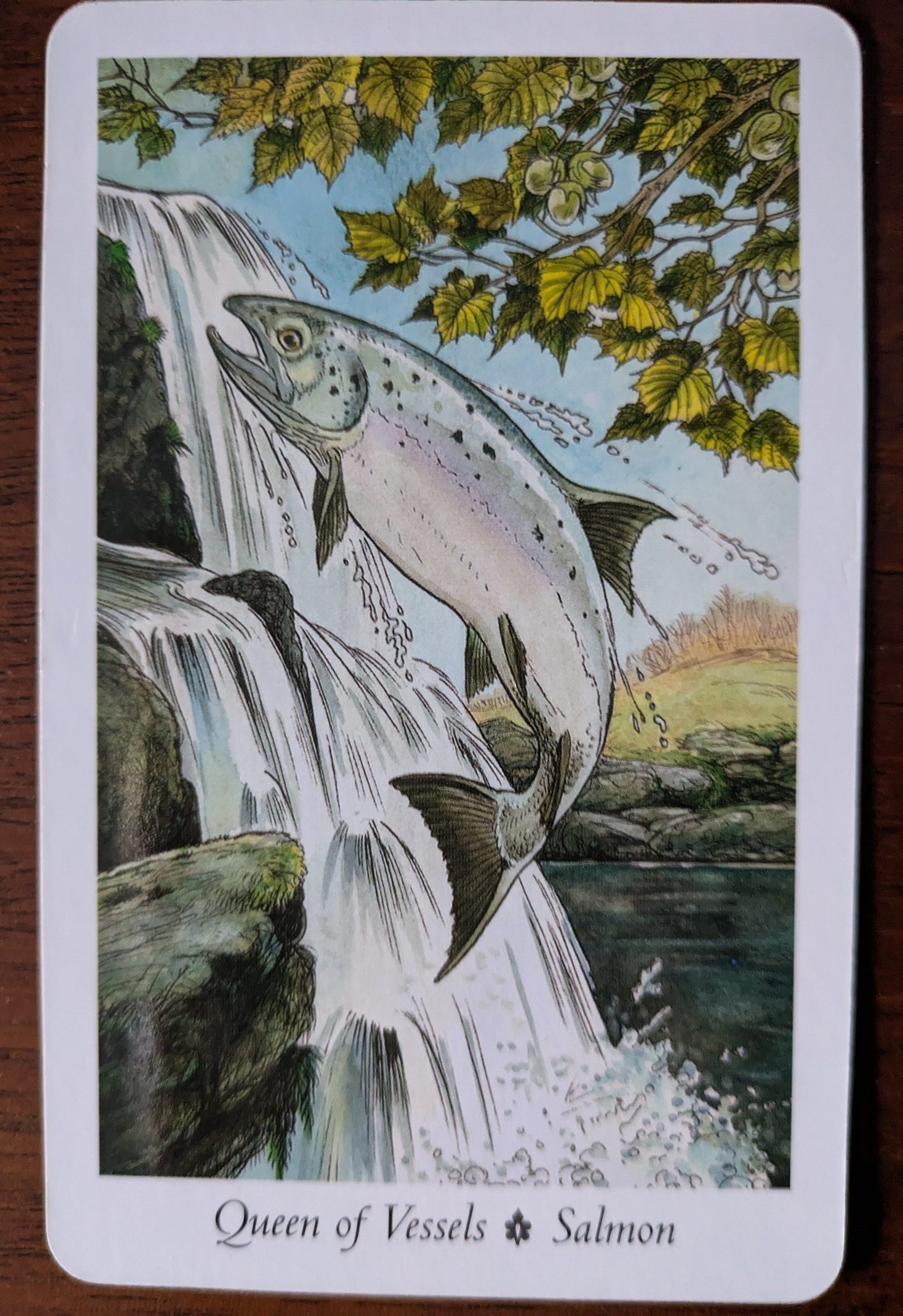
In the Wildwood Tarot, Cups are named Vessels, and the queen is depicted as a salmon, emphasizing the willingly self-sacrificing aspect of love (salmon, of course, take a perilous journey back to their spawning ground to mate, and many of them don’t make it). For me, however, the salmon is a powerful symbol of reconnecting with both the source of all life, and with our childhood selves – stripping away the rigid layers of beliefs and judgements that have formed over the years, to access our innate creativity and joyfulness.
In the Spacious Tarot, the Guardian of Cups (as the queen is called in this deck) is a fish enchanted by a lotus: a beautiful, meditative illustration of the importance of tending to our own emotions, creative drive or intuition. This encapsulates part of the very essence of love, honouring our innate beauty and gifts.
Engaging with a card from our chosen deck is one way to connect its message. Just as a Tarot deck itself is greater than the sum of its parts, with an energy that transcends the physical, the Queen of Cups has her own archetypal, elemental power, which can be directly felt by engaging with water in all its forms: oceans, rivers, waterfalls, lakes, pools; raindrops, fog, snow, ice; even showers, baths, and bowls of dishwater! We don’t have to be out in nature to explore the sounds and sensations of water! We don’t even have to directly see or touch it; it is enough to simply reflect or meditate on its many forms and manifestations. You might try journeying in your imagination along the course of a river, say, or through a humid rainforest (as I did during a guided meditation as part of my Certificate in Tarot Therapy). Notice the subtle or profound ways in which your emotions and your physical senses respond. Let your mind’s eye guide your whole self.
Once we start noticing water, rather than merely taking it for granted, we open to its elemental nature, and the variations in our relationship with it through the seasons. Whilst there is much debate about the attribution of seasons to Tarot suits, for me, autumn is Cups season. Indeed, one of its symbols is the cup, or chalice. Autumn is the energy of water, feelings, reflection and intuition, of the wise woman, emotional release and healing, flow, cleansing, and dreams.
In this month of November, with nature in soft disarray, falling, curling, slowing, retreating, and sinking around us, the Queen of Cups energy seems more tangible than at any other time of year. She inhabits the mists, the rain, the damp mulch of leaves, each glistening jewel of water on the mushroom caps. In this season, her love feels meady and rich, tinged with melancholy; quite different to the exuberant, champagne-like love of spring. As day cools to night, she beckons us to the fireside, where we can contemplate the other elements of earth, air and fire.
At Samhain, we experience the Queen of Cups when we hold quiet space for loved ones who have passed on, dipping into the well whose waters are formed of the cumulative loves of our ancestors - for each other, and for life.
The Queen of Cups represents more than love, of course; she is the vessel containing every emotion, the mystery of intuition and of creativity. Yet, in my experience, she is always, above all else, Love. She regularly appears when I am working with the cards, either for myself or with a client or friend, as one card of several in a spread or as a guidance card drawn at the end of a reading. At such times, there is a potent sense of her rushing into the room and tears (another form of water) will often flow.
Her message, then, is that simplest and yet most challenging of truths: you are loved. It might not always seem plausible, living as we do in this achingly beautiful, yet excruciatingly troubled world, but I trust and feel in my bones that love is the animating, cosmic force, searing in its intensity, saturating in its ubiquitous presence. A huge mantle for one Queen to wear, yet she does so with tremendous grace, and an unswerving faith in your ability to feel that love and pass it on.
I’ve heard it said that we humans are the cosmos seeking to understand itself. If that is so, then we are also the cosmos seeking expression for a love so vast, exuberant, and inexhaustible that it cannot be contained within a concept - only felt, and given, freely and without end.

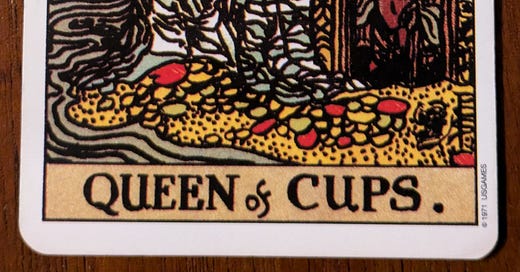



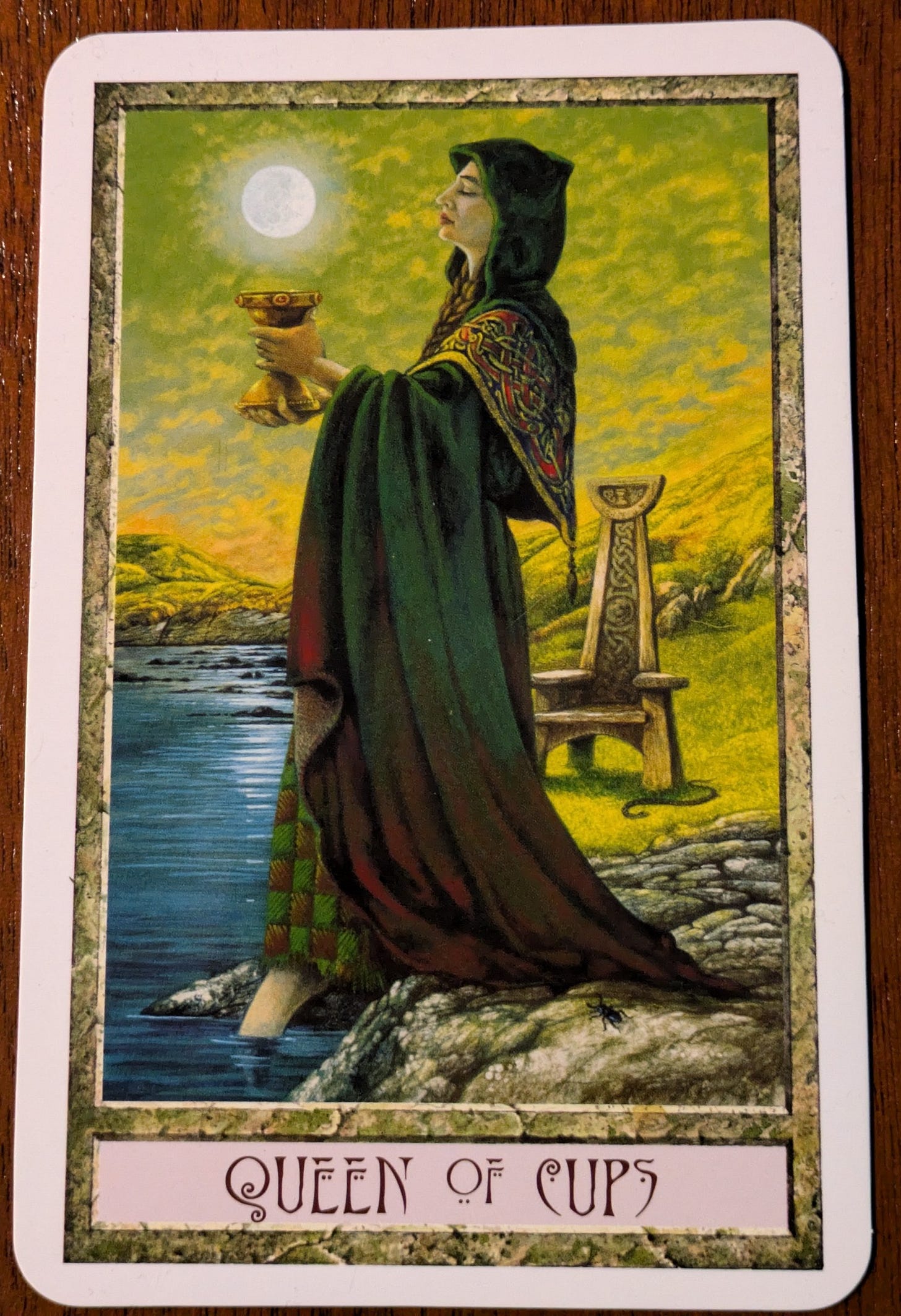
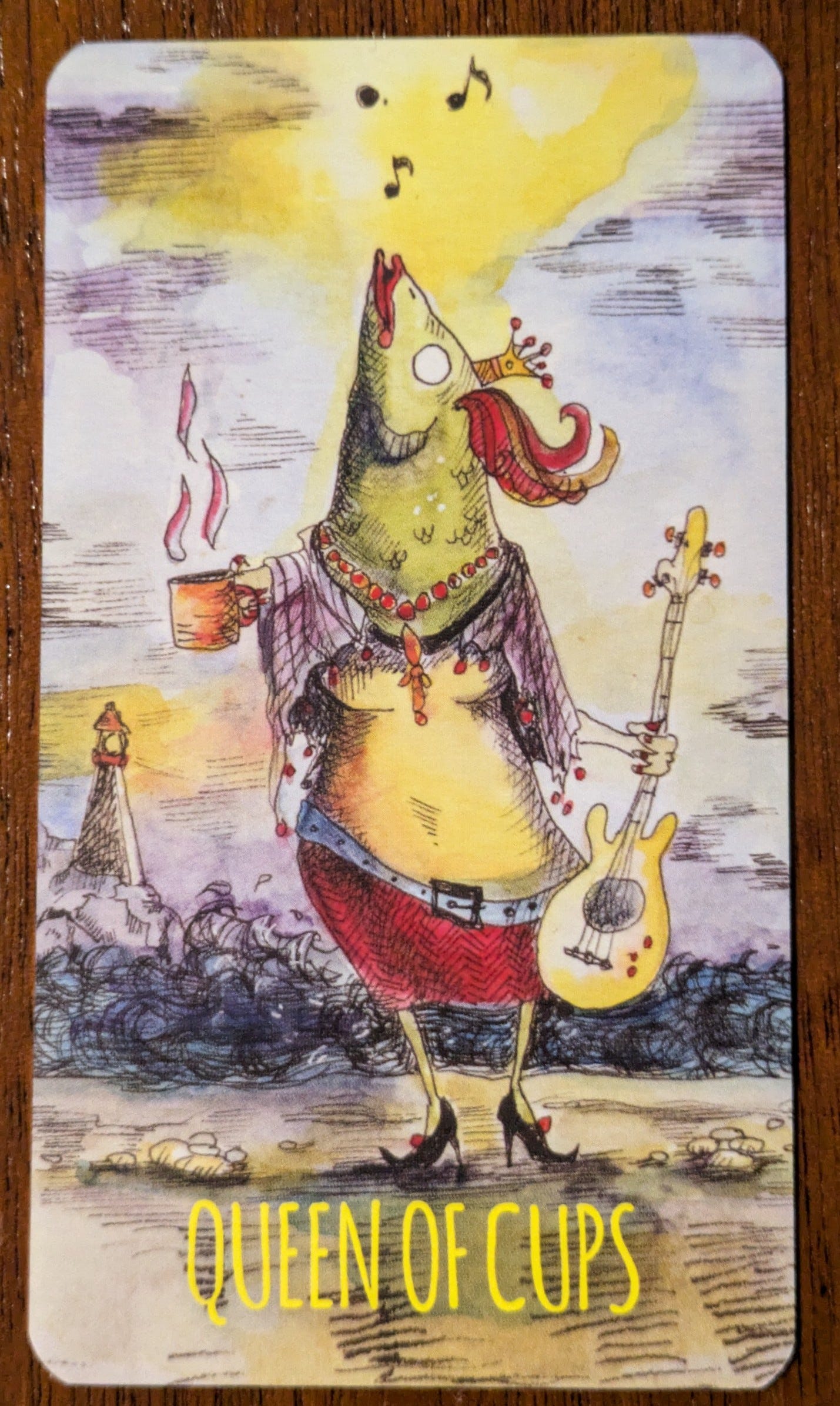
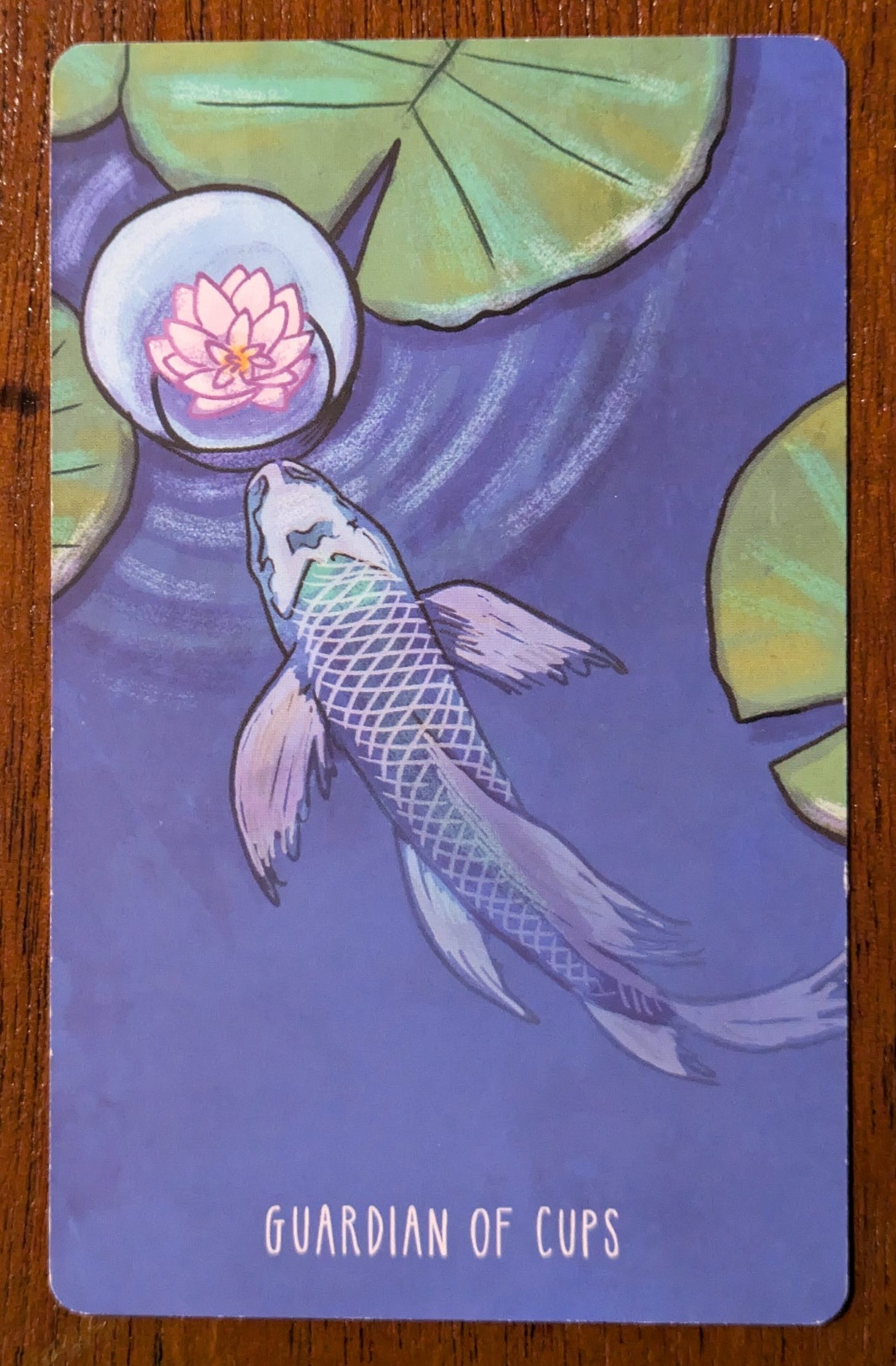
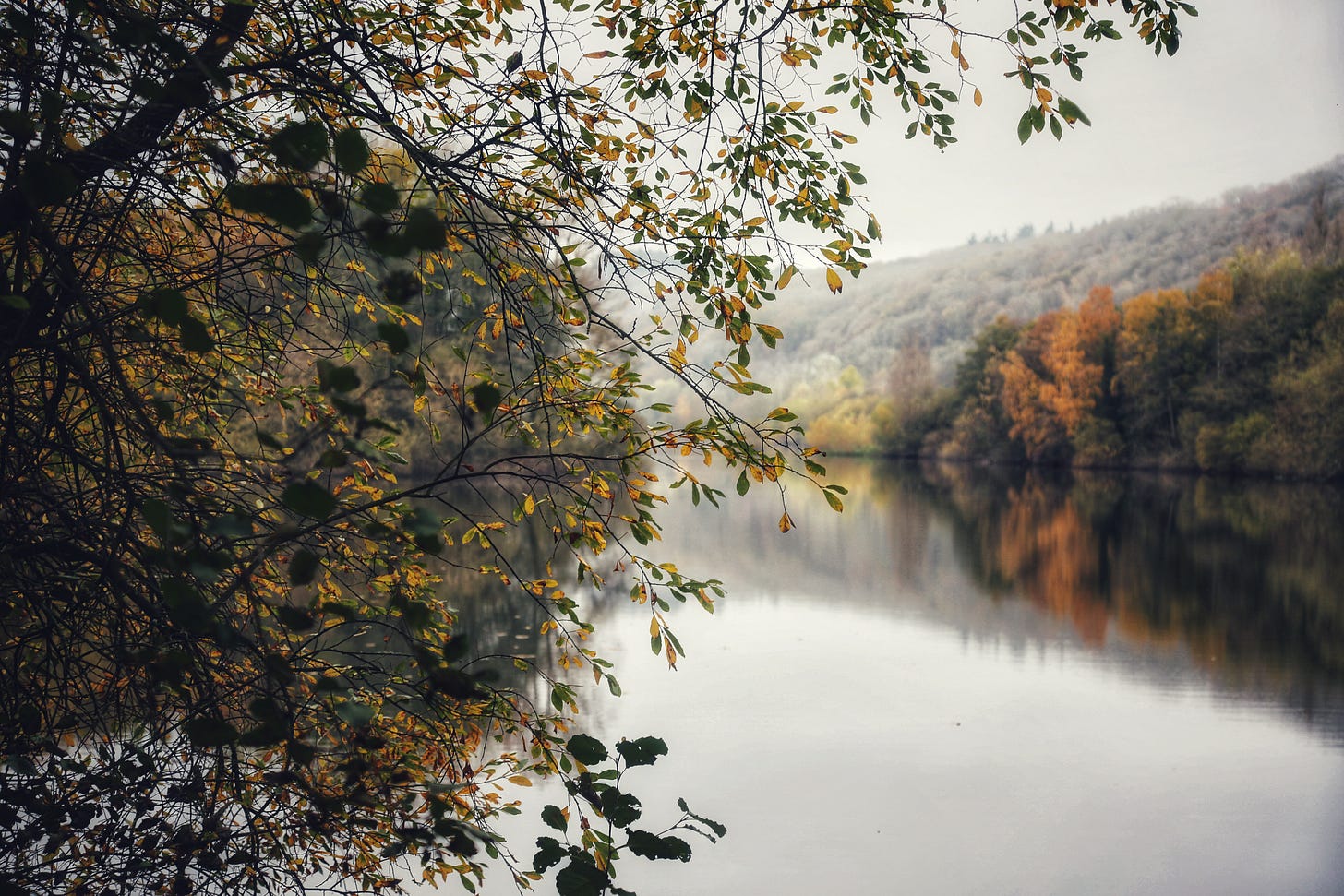
What a wonderful introduction to the Tarot. Lizzie. I’ve long been wanting to learn about it and am excited to come on this journey with you where you share it so beautifully. I too have come to believe that this human life is all about love and learning to open our hearts and minds to everyone and everything. Mine used to be closed as I thought that was keeping me safe but since I opened it wide everything in my life has become better 💙
This is really beautiful, Lizzie. A fantastic start to your Baggy-Trousered Tarotist. I adore how you describe the tarot as a love song to life, and found it fascinating to learn more about the Queen, especially as she is connected to the element of water and I'm always hungry for more wisdom around the elements. What is also ringing through me are your final words around the Queen's faith in our ability to feel love and pass it on. One of the most significant aspects of my own healing journey has be to discover, and then own, the gigantic capacity for love that I contain, and to overcome my fear in expressing that. This post felt like a little acknowledgment that I was right to follow this urge and to let love be my guide. Thank you.